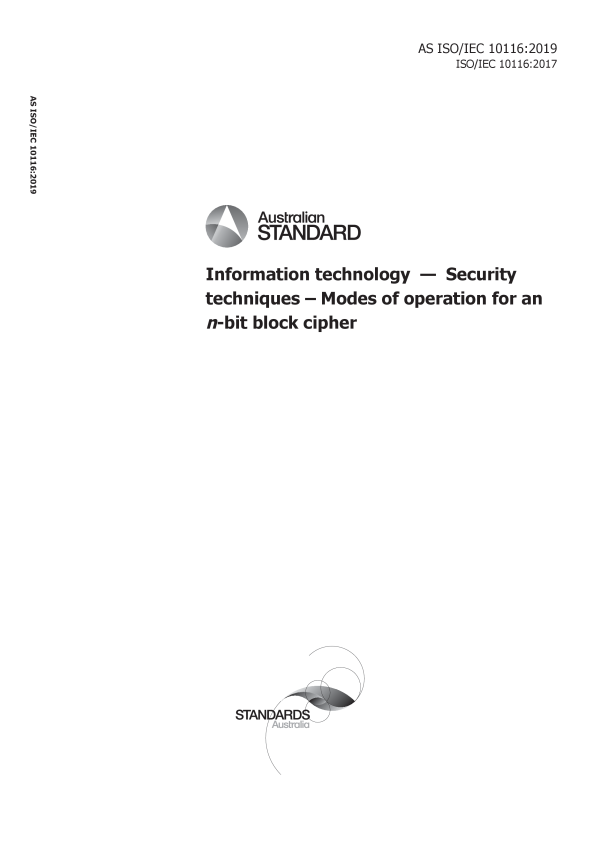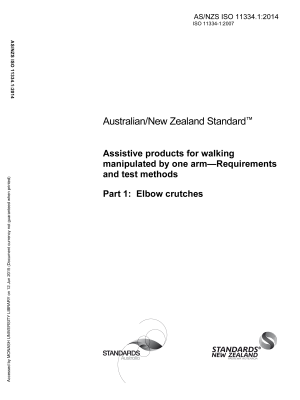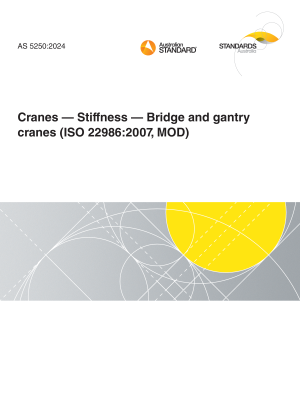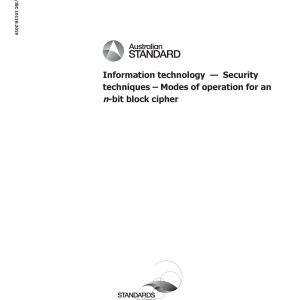🔍

Purchase the full subscription package now and enjoy a 40% discount, along with free updates for future editions.
AS ISO/IEC 10116:2019
$177.61
Information technology – Security techniques – Modes of operation for a n-bit block cipher
The objective of this Standard is to establish five modes of operation for applications of an n-bit block cipher (e.g. protection of data during transmission or in storage). The defined modes only provide protection of data confidentiality. Protection of data integrity is not within the scope of this document. Also, most modes do not protect the confidentiality of message length information.
Table of contents
Header
About this publication
Preface
Foreword
Introduction
1 Scope
2 Normative references
3 Terms and definitions
4 Symbols, abbreviated terms and notation
4.1 Symbols and abbreviated terms
4.2 Notation
5 Requirements
6 Electronic Codebook (ECB) mode
6.1 Preliminaries
6.2 Encryption
6.3 Decryption
7 Cipher Block Chaining (CBC) mode
7.1 Preliminaries
7.2 Encryption
7.3 Decryption
7.4 Avoiding ciphertext expansion
7.4.1 General
7.4.2 Three ciphertext stealing variants of CBC
7.4.2.1 Preliminaries
7.4.2.2 Processing after CBC encryption (ciphertext contraction)
7.4.2.3 CBC decryption pre-processing (ciphertext extension)
8 Cipher Feedback (CFB) mode
8.1 Preliminaries
8.2 Encryption
8.3 Decryption
8.4 Avoiding ciphertext expansion
9 Output Feedback (OFB) mode
9.1 Preliminaries
9.2 Encryption
9.3 Decryption
9.4 Avoiding ciphertext expansion
10 Counter (CTR) mode
10.1 Preliminaries
10.2 Encryption
10.3 Decryption
10.4 Avoiding ciphertext expansion
Annex A
Annex B
B.1 General
B.2 Electronic Codebook (ECB) mode of operation
B.2.1 Properties and security guidance
B.2.2 Error propagation
B.2.3 Synchronization
B.3 Cipher Block Chaining (CBC) mode of operation
B.3.1 Properties and security guidance
B.3.2 Error propagation
B.3.3 Synchronization
B.4 Cipher Feedback (CFB) mode of operation
B.4.1 Properties and security guidance
B.4.2 Error propagation
B.4.3 Synchronization
B.5 Output Feedback (OFB) mode of operation
B.5.1 Properties and security guidance
B.5.2 Error propagation
B.5.3 Synchronization
B.6 Counter (CTR) mode of operation
B.6.1 Properties and security guidance
B.6.2 Error propagation
B.6.3 Synchronization
Annex C
Annex D
D.1 General
D.2 Triple Data Encryption Algorithm (TDEA)
D.2.1 General
D.2.2 ECB Mode
D.2.2.1 ECB Mode, encryption
D.2.2.2 ECB Mode, decryption
D.2.3 CBC Mode
D.2.3.1 CBC mode, encryption
D.2.3.2 CBC mode, decryption
D.2.4 CFB Mode
D.2.4.1 CFB Mode, encryption
D.2.4.2 CFB Mode, decryption
D.2.5 OFB Mode
D.2.5.1 OFB Mode, encryption
D.2.5.2 OFB Mode, decryption
D.2.6 Counter Mode
D.2.6.1 Counter Mode, encryption
D.2.6.2 Counter Mode, decryption
D.3 Advanced Encryption Standard (AES)
D.3.1 General
D.3.2 ECB Mode
D.3.2.1 ECB Mode, encryption
D.3.2.2 ECB Mode, decryption
D.3.3 CBC Mode
D.3.3.1 CBC Mode, encryption
D.3.3.2 CBC Mode, decryption
D.3.4 CFB Mode
D.3.4.1 CFB Mode, encryption
D.3.4.2 CFB Mode, decryption
D.3.5 OFB Mode
D.3.5.1 OFB Mode, encryption
D.3.5.2 OFB Mode, decryption
D.3.6 Counter Mode
D.3.6.1 Counter Mode, encryption
D.3.6.2 Counter Mode, decryption
Bibliography
Cited references in this standard
Please select a variation to view its description.
| Published | 28/08/2019 |
|---|---|
| Pages | 38 |
Please select a variation to view its pdf.




